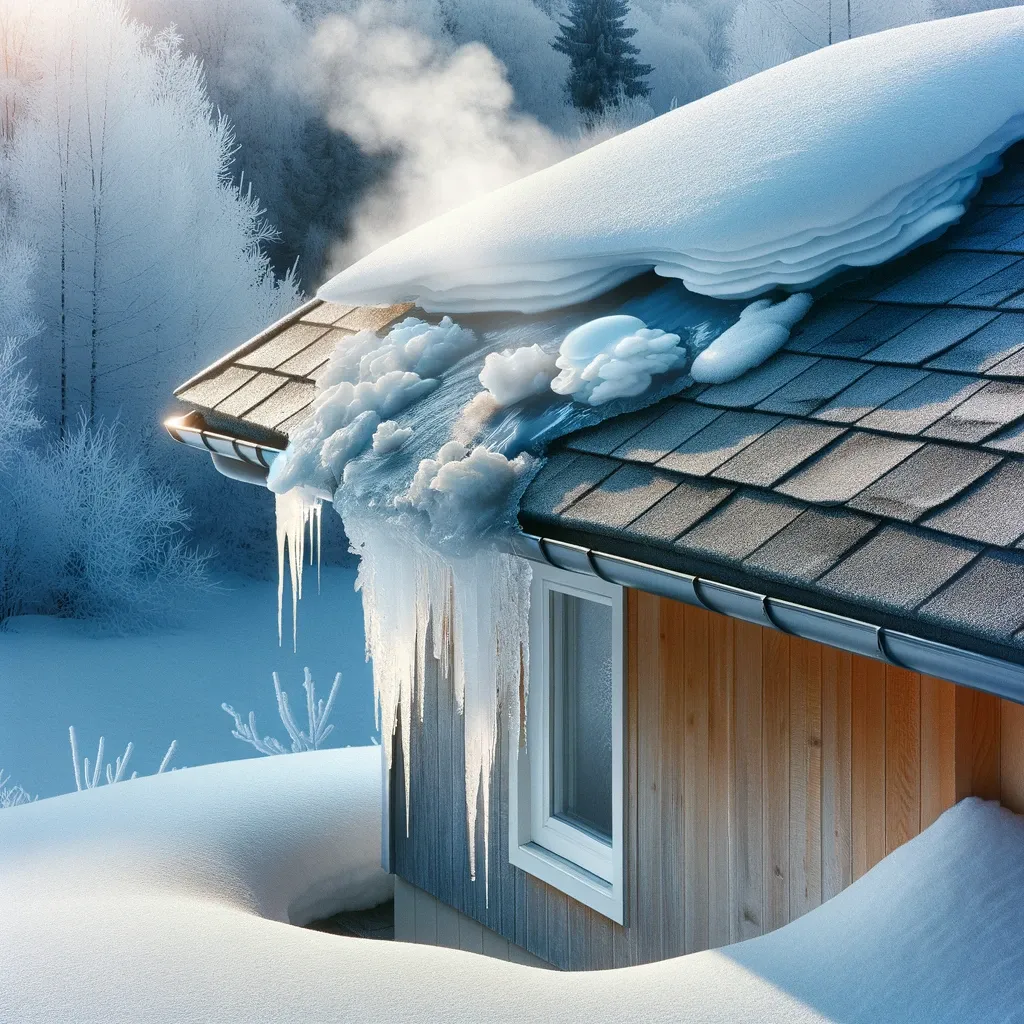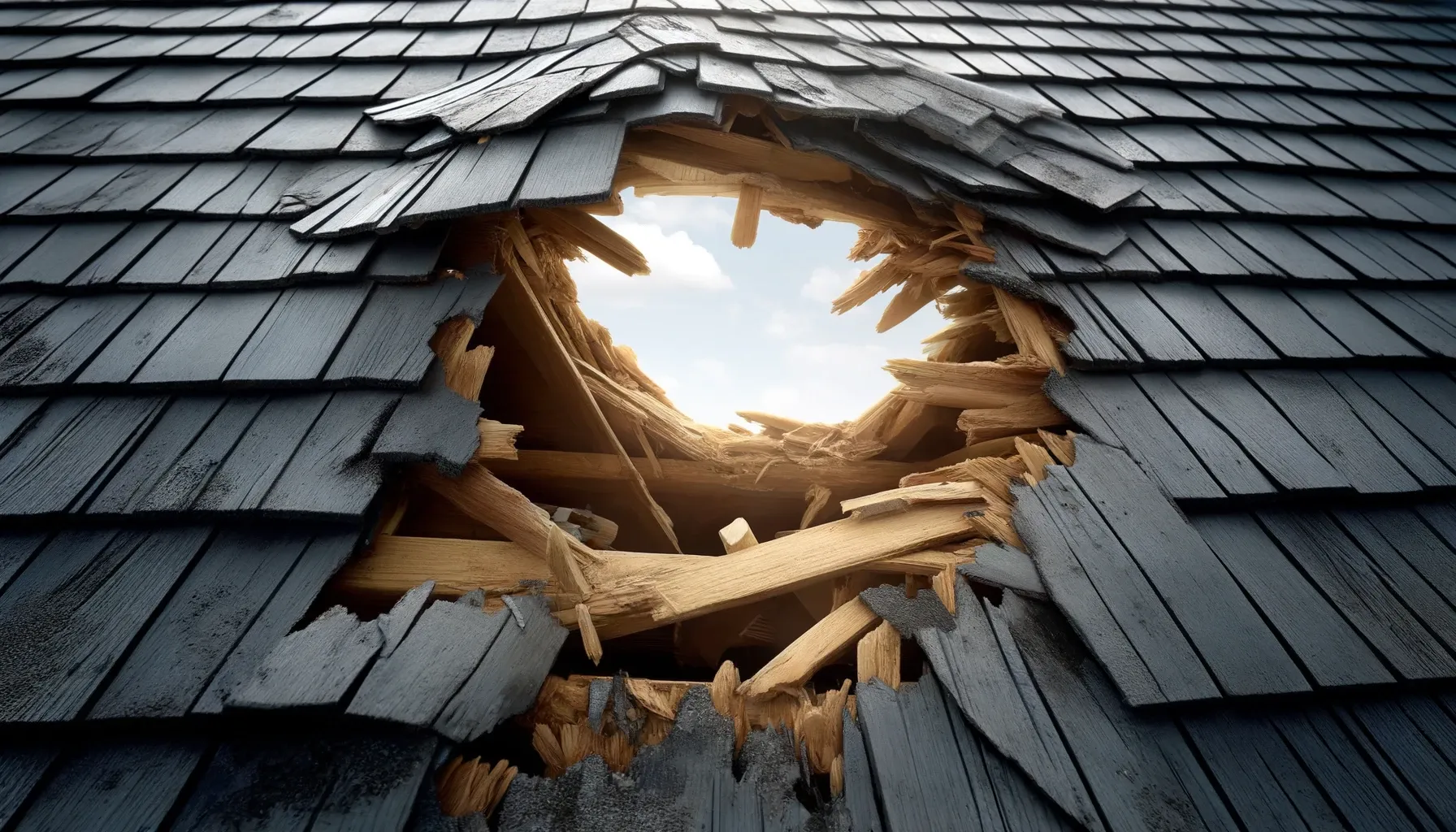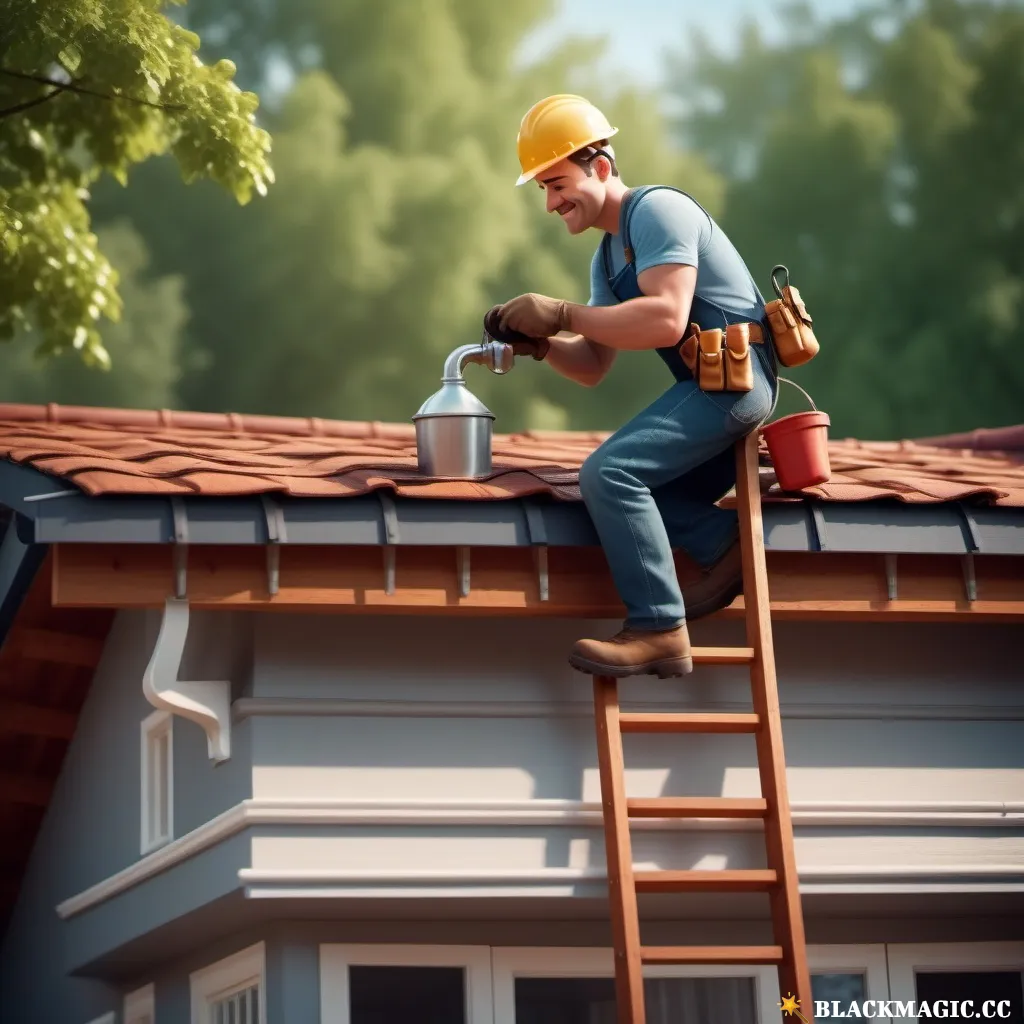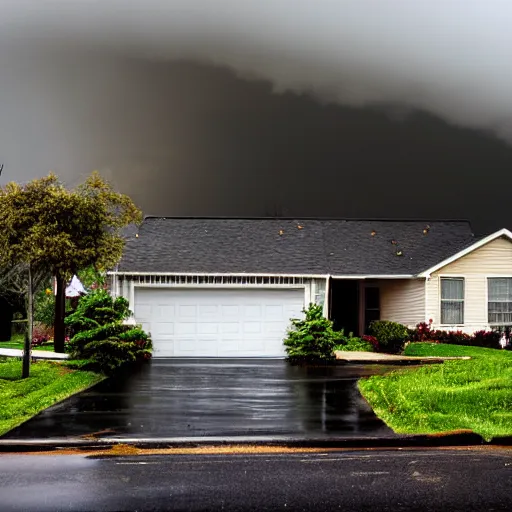How do you Fix a Gap Between a Wall and a Roof?
Have you ever wondered how to fix a troublesome gap between a wall and a roof?
Well, fret no more because we have some simple yet effective solutions for you. Whether it's due to poor construction, settling of the house, or weather damage, this unwanted gap can cause various issues such as water leakage, heat loss, and even unwanted critters making their way into your home.
In this article, we will explore some practical methods that you can easily implement to seal that gap and restore peace of mind to your living space. So let's get started on bridging the divide between your wall and roof!
Identifying the Cause of the Gap
Inspecting the Wall and Roof
When faced with a gap between a wall and a roof, the first step is to carefully inspect both the wall and the roof. Take a close look at the area where the gap is located and try to determine the cause.
Examine the condition of the roofing materials, such as shingles or tiles, for any signs of damage or deterioration. Inspect the wall for cracks, gaps, or any structural issues that could be contributing to the gap. By conducting a thorough inspection, you can gather valuable information that will help in the repair process.

Checking for Structural Issues
Structural issues can sometimes be the underlying cause of a gap between a wall and a roof. Look for signs of sagging or bowing in the roof structure or the wall itself.
This could indicate a problem with the foundation or the supporting beams. It's important to identify and address any structural issues promptly, as they can worsen over time and lead to more serious damage. If you notice significant structural issues, it may be necessary to consult a professional, such as a structural engineer, to assess the situation and provide guidance on how to proceed.
Identifying Weather-related Causes
Weather can also play a role in causing gaps between a wall and a roof. Extreme temperatures, heavy rain, windstorms, or even natural disasters like earthquakes can all contribute to the separation of these two components.
Look for any signs of weather-related damage, such as loose or displaced roofing materials, water stains, or mold growth. Understanding the potential impact of weather on the gap will help determine the appropriate repair methods.
Determining Settling or Shifting
In some cases, settling or shifting of the building's foundation can lead to a gap between a wall and a roof. This is particularly common in older buildings or those located in areas with unstable soil conditions.
If you suspect that settling or shifting is the cause of the gap, it is crucial to address the underlying foundation issues before proceeding with any repairs. Consult a professional to assess the stability of the foundation and recommend appropriate measures to stabilize it.
Preparation and Safety Measures
Gathering Necessary Tools and Materials
Before starting any repair work, it is essential to gather all the necessary tools and materials.
This may include items such as caulk or sealants, weatherproofing tape, temporary fillers, roofing materials for replacement, and appropriate tools like ladders, hammers, and screwdrivers. By having everything on hand, you can ensure a smooth and efficient repair process.
Ensuring Safety Measures
Safety should always be a top priority when working on any home repair project. Make sure to assess the potential risks involved in fixing a gap between a wall and a roof. If the gap is in a high or hard-to-reach area, consider using scaffolding or hiring a professional who has the proper equipment and training.
Also, be mindful of overhead power lines and take precautions to avoid electrical hazards.
Using Protective Gear
To protect yourself during the repair process, it is crucial to wear appropriate protective gear. This may include safety glasses, gloves, a hard hat, and sturdy footwear. These items can help prevent injuries and ensure your safety while working at heights or handling potentially hazardous materials.
Creating a Stable Work Environment
Before starting any repair work, it is essential to create a stable and safe work environment. Remove any loose debris or objects that may pose a tripping or falling hazard. Make sure the area is well-lit to minimize the risk of accidents.
If necessary, use barricades or caution tape to prevent others from entering the work zone. Taking the time to create a secure workspace will help minimize potential risks and ensure a successful repair process.
Temporary Fixes
Using Sealants or Caulk
One temporary fix for the gap between a wall and a roof is to use sealants or caulk. This method is ideal for smaller gaps and can provide a temporary barrier against water infiltration and drafts.
Start by cleaning the area around the gap to ensure proper adhesion. Apply the sealant or caulk directly into the gap, using a caulking gun or a similar tool. Smooth out the sealant with a putty knife or your finger to create an even finish. Keep in mind that sealants and caulk may not be a long-term solution and may require periodic maintenance or replacement.
Applying Weatherproofing Tape
Weatherproofing tape is another temporary fix that can help seal gaps between a wall and a roof. This self-adhesive tape is designed to provide a watertight seal and can be applied directly over the gap.
Clean the area thoroughly before applying the tape to ensure maximum adhesion. Press the tape firmly onto the surface, ensuring there are no air bubbles or gaps. Weatherproofing tape is a quick and easy solution, but it may not be as durable as other repair methods and may need to be replaced over time.
Using Temporary Fillers
For larger gaps or openings, temporary fillers can be used to close the space between a wall and a roof. One common filler is expanding foam, which expands to fill the gap and create an airtight seal. Ensure the area is clean and free of debris before applying the foam.
Follow the manufacturer's instructions for proper application and allow the foam to cure completely before trimming or shaping it to fit the gap. Temporary fillers can provide an immediate solution to the gap, but they may need to be replaced or reinforced with a more permanent fix in the future.
Professional Inspection
Contacting a Roofing Contractor
If the gap between the wall and roof is significant or if you are unsure about the cause or extent of the damage, it may be necessary to contact a professional roofing contractor.
These experts have the knowledge and experience to assess the situation properly and provide appropriate solutions. A roofing contractor can conduct a thorough inspection of the roof and identify any underlying issues that need to be addressed. They can also provide recommendations for repairs or replacements based on the specific needs of your home.

Hiring a Structural Engineer
In cases where structural issues are suspected to be the cause of the gap, consulting a structural engineer may be necessary. A structural engineer specializes in assessing the stability and integrity of buildings.
They can thoroughly evaluate the foundation, walls, and roof structure to determine the root cause of the gap. If any repairs or reinforcements are needed, the structural engineer can provide detailed plans and specifications that ensure the long-term safety and stability of the structure.
Getting Expert Advice
Even if you decide to tackle the gap repair yourself, it can be highly beneficial to seek expert advice.
Reach out to professionals who specialize in roofing, architecture, or construction to gather insights and recommendations on the best approach for your specific situation. They can offer valuable guidance, tips, and techniques that will help ensure the success and durability of your repair work.
Repairing Damaged Roof or Wall
Replacing Damaged Roofing Materials
If the gap between the wall and roof is due to damaged or deteriorated roofing materials, it may be necessary to replace them. Start by removing the old, damaged materials carefully.
Depending on the type of roof, this may involve removing shingles, tiles, or other roofing components. Replace the damaged materials with new ones that are compatible with your existing roof. Follow proper installation techniques and manufacturer guidelines to ensure a watertight and long-lasting repair.
Repairing or Rebuilding the Wall
If the gap is a result of wall damage, such as cracks or gaps, repairing or rebuilding the wall may be necessary. Small cracks or gaps can often be patched with durable fillers or sealants.
For more extensive damage, consult a professional contractor who can evaluate the wall's condition and recommend appropriate repairs or rebuilding methods. It's important to address any wall issues promptly to prevent further damage and maintain the structural integrity of the building.
Addressing Structural Issues
In cases where the cause of the gap is identified as structural issues, it is crucial to address these problems to ensure a long-lasting repair. This may involve reinforcing the supporting beams, stabilizing the foundation, or making other structural modifications.
Hiring a professional, such as a structural engineer, is recommended to properly assess the situation and provide expert guidance on the most effective solutions. By addressing underlying structural issues, you can prevent further damage and maintain the stability of your home.
Weatherproofing and Insulation
Applying Weather-resistant Coatings
Weather-resistant coatings, such as elastomeric or acrylic coatings, can provide an extra layer of protection to the roof and wall.
These coatings are designed to withstand harsh weather conditions, including UV rays, rain, and temperature fluctuations. Clean the surface thoroughly before applying the coating, and follow the manufacturer's instructions for proper application. Weather-resistant coatings can help prevent water infiltration and extend the lifespan of the roof and wall.
Installing Roof Flashing
Roof flashing is a crucial component for preventing water leaks and sealing gaps between the roof and other structures, such as walls or chimneys. It is typically made of metal or rubber and is installed in vulnerable areas where water may penetrate, such as valleys or roof junctions.
Properly installed flashing can redirect water away from the gap, protecting the underlying structure and preventing moisture-related issues. Consult a professional to determine the type and placement of flashing that is most suitable for your specific roof and wall configuration.
Adding Insulation
Insufficient insulation in the attic or roof can contribute to gaps and temperature fluctuations. By adding insulation, you can help maintain a comfortable indoor environment, reduce energy costs, and minimize the risk of condensation and moisture-related damage.
Insulation materials such as fiberglass batts, spray foam, or blown-in cellulose can be installed in the attic or roof cavity to increase thermal resistance. Consult local building codes and recommendations to determine the appropriate insulation type and R-value for your region.
Proper Ventilation
Inspecting Ventilation System
Proper ventilation is essential for maintaining a healthy and functional roof and wall system. Inspect the existing ventilation system to ensure it is functioning correctly and meeting the recommended airflow requirements.
Check for any blockages or obstructions in vents or exhaust fans that may be impeding proper air circulation. Poor ventilation can lead to excess moisture buildup, which can contribute to the formation of gaps as well as mold and mildew growth.
Ensuring Adequate Airflow
To ensure adequate airflow in the roof and wall system, it is essential to have both intake and exhaust vents. Intake vents allow fresh air to enter the space, while exhaust vents allow hot or moist air to escape. This cycle of air circulation helps regulate temperature, reduce moisture buildup, and prevent the formation of gaps. Consult a professional to determine the appropriate number, size, and placement of vents for optimal ventilation in your specific structure.
Installing Vents or Exhaust Fans
If your ventilation system is inadequate or needs improvement, consider installing additional vents or exhaust fans. These can help increase airflow, reduce excess moisture, and improve the overall functionality of the roof and wall system.
Vents can be installed in the soffits, gable ends, or ridge of the roof, while exhaust fans can be placed in areas with high humidity or limited ventilation, such as bathrooms or kitchens. Consult a professional for guidance on the most suitable type and placement of vents or fans for your specific needs.
Preventing Future Gaps
Regular Roof and Wall Maintenance
One of the most effective ways to prevent gaps between a wall and a roof is through regular maintenance. Schedule periodic inspections to identify and address any potential issues before they worsen.
Clean the roof and gutters regularly to prevent debris buildup, which can lead to water backup and damage. Also, regularly inspect the wall for any signs of cracking, gaps, or deterioration. By staying proactive and addressing minor problems promptly, you can prolong the lifespan of your roof and wall system and prevent the formation of future gaps.
Addressing Foundation Issues
Since settling or shifting of the foundation can contribute to gaps between a wall and a roof, addressing any foundation issues is crucial to preventing future gaps.
Consult a professional contractor or structural engineer to assess the stability of the foundation and recommend any necessary repairs or reinforcements. In some cases, installing additional supports or stabilizing devices may be required. By maintaining a stable foundation, you can minimize the risk of gaps and maintain the structural integrity of the building.
Trimming Overhanging Trees
Overhanging branches and trees can cause damage to the roof and wall, leading to gaps or other structural issues. Regularly inspect the area surrounding your home and trim any branches that come into contact with the roof or wall.
This will help prevent damage from falling branches or excessive rubbing against the surface. Additionally, by keeping trees properly trimmed, you can minimize the risk of leaves or debris accumulating on the roof, which can lead to clogged gutters and water backup.
Keeping Gutters Clean
Clogged gutters can contribute to water backup and damage, leading to the formation of gaps between a wall and a roof. Regularly clean your gutters to remove any debris, leaves, or twigs that can obstruct the flow of water.
Consider installing gutter guards or screens to minimize the amount of debris that enters the gutters. Properly functioning gutters will direct water away from the roof and wall, reducing the risk of water infiltration and subsequent gap formation.
DIY vs. Professional Assistance
Assessing DIY Skills and Knowledge
When deciding whether to tackle the gap repair as a do-it-yourself (DIY) project or seek professional assistance, it is important to assess your own skills and knowledge.
Be realistic about your abilities and expertise in working with roofing materials, wall structures, and related repair techniques. Consider your past experience with similar projects and evaluate whether you have the necessary tools and resources to complete the repair successfully.
Considering Time and Effort
Repairing a gap between a wall and a roof can be a time-consuming and labor-intensive task, depending on the severity of the gap and the extent of the necessary repairs. Assess your availability and willingness to invest the required time and effort into the project. Consider whether you have the flexibility to dedicate your attention to the repair or if hiring a professional will be more practical for your specific circumstances.
Determining Budget
Another factor to consider is your budget. Determine the estimated costs of materials, tools, and equipment needed for the repair. Research the average costs of hiring professionals in your area to compare with the DIY approach. Keep in mind that DIY repairs may initially seem more cost-effective but could potentially lead to additional expenses if mistakes are made or if the repairs prove to be unsuccessful.
Pros and Cons of Each Option
Both DIY and professional assistance have their pros and cons. DIY repairs can offer a sense of achievement and potentially save money. However, it requires a significant investment of time, effort, and research.
On the other hand, hiring a professional provides expertise, knowledge, and the assurance of a job well done. Professionals can also identify any underlying issues that may go unnoticed by a DIY enthusiast. Consider your personal preferences, priorities, and available resources to make an informed decision about the best approach for your unique situation.
Evaluating the severity of the gap between a wall and a roof is crucial in determining the appropriate solution. Whether caused by structural issues, weather-related factors, or settling, it is essential to address the underlying problem to ensure a long-term and durable repair.
Temporary fixes such as sealants, weatherproofing tape, or fillers can provide immediate relief but may require periodic maintenance or replacement. Involving professionals, such as roofing contractors or structural engineers, can provide expert advice and ensure the safety and effectiveness of repairs.
Additionally, preventive measures such as regular maintenance, proper weatherproofing and insulation, adequate ventilation, and addressing foundation issues can help prevent future gaps.
When deciding between DIY and professional assistance, consider factors such as skills, time, budget, and the complexity of the repair. By prioritizing safety and long-term durability, you can successfully fix the gap between your wall and roof and maintain the integrity of your home.







